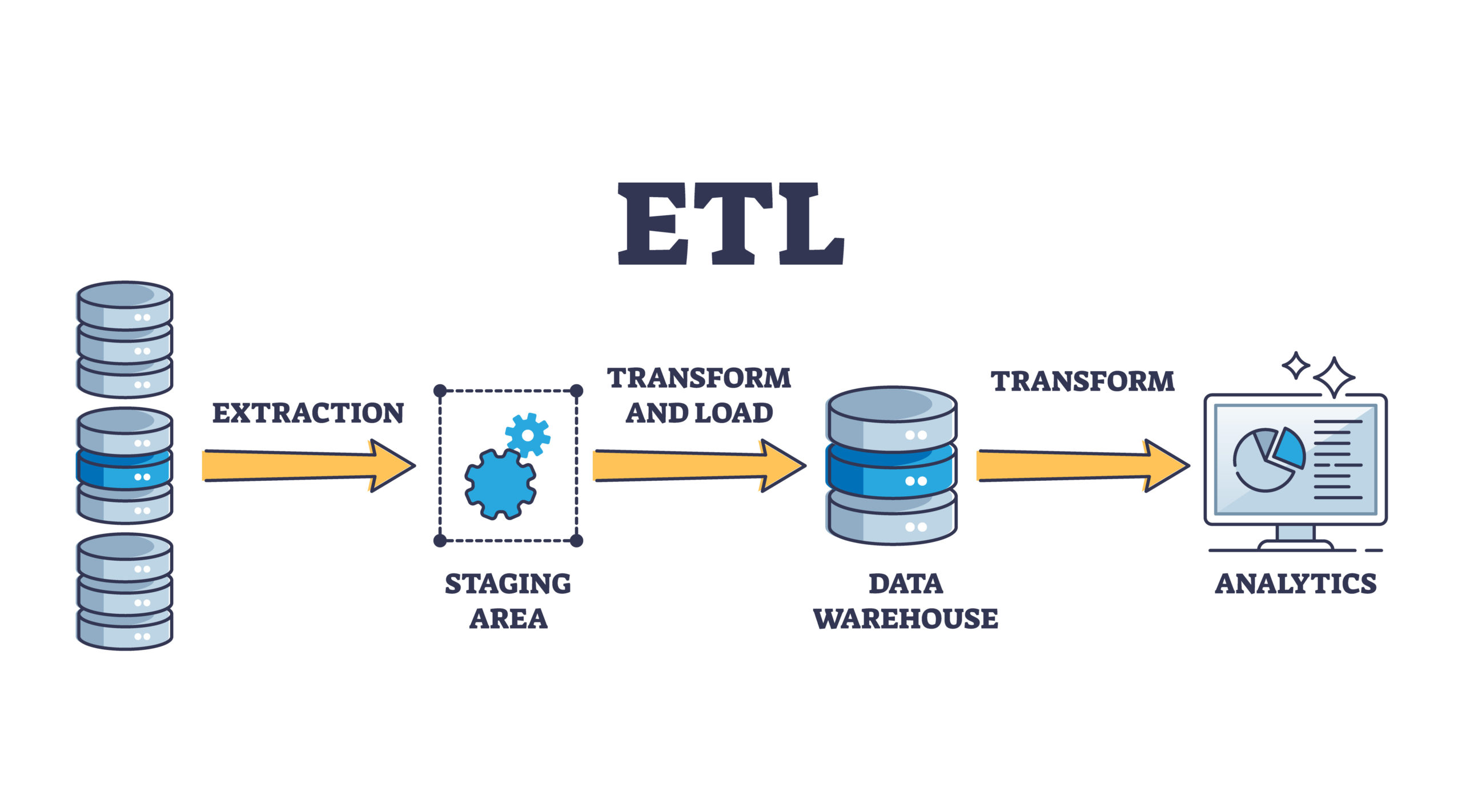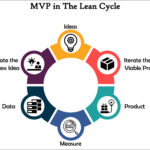ETL: Foundation Of Data-Driven Business
Data like trash is disposed of in the file rooms or in the hard drive stacked in one corner. However, with advancements in technology and the shift from being a result-driven economy to a customer-oriented culture, data garnered huge attention.
The amount of data produced is increasing at an incredible pace. The expected count is $274.3 billion data by the end of 2022. However, a survey suggests that nearly 99.5% of the data is not used. Primarily because most of the data here are raw and scattered, holding no importance. What we need here is to consolidate and combine them in a single head to use them for insight information.This is where we introduce the concept of ETL.
What is ETL Process: Explaining the Traditional Way
ETL, the acronym for Extract-Transform-Load is a modern-day process of extracting data from multiple sources (in raw or scattered format), cleaning (convert them to a standard format), and centralizing them for optimization. Put simply, ETL is a data integration process that facilitates the assessment and analysis of the same. This helps organizations gather insights for informed decision-making.
Irrespective of whether you belong to the customer support team or the marketing department, analysts today require data today to make smarter decisions. ETL is one way to ingest data from disparate sources and equip each department with the right set of information.ETL isn’t a new concept and has been in the industry for quite a time. Traditionally, the ETL process involved batch pulling of data from different sources (files, APIs, IoT devices, etc). Once done, the tool will transform the data making it appropriate for loading. The next step involves processing and cleaning up data to load it to the central database for further analysis.
Even though the traditional ETL process holds significant potential, it isn’t the best way to accumulate data. Since most of the processes are manual, scaling is quite difficult. Also, the time spent rewriting scripts after every update makes the entire process gruesome.
Adhering to the above, experts and engineers prefer ETL tools to automate the process, increasing efficiency and boosting time-to-market.
Modernizing the Mechanism: ETL Tools
The new-age ETL process is pretty much similar to that of the conventional method. The only difference lies in the fact that the existing ETL process has tools that automate the entire process. Where one end connects to the data warehouse, the other links to different data sources. ETL tools act as the connector doing all of the heavy-lifting processes. Right from data extraction to filtering, sorting, and loading data, ETL tools do all.
Unlike the traditional way of moving data to the warehouse via coded pipelines, ETL tools have a graphical interface to simplify the job. This further makes it easier for data scientists to study data and render information. There are multiple ETL tools, starting with Open-source tools, cloud-based tools, and real-time tools along with batch processing. The choice of the tool largely depends upon the needs of your organization.Each of the tools is custom fit to accelerate the process of extraction and load putting automation in place. This helps cut short the operational time while enhancing the end-to-end efficiency. ETL tools break down the data silos, removing redundancy, and eliminating duplicity. All of this contributes to timely access to data while coping with the bottlenecks associated in real-time.
The built-in intelligence further adds to data quality improving data query results and leveling up the system performance. All in all, ETL tools are what an organization needs to rev up its data-driven economy.
ETL Process: Understanding through an Example
To design an ETL pipeline, one can use the method of batch processing or stream processing. The fact that organizations today seek real-time gathering and data processing, stream processing is the best way to build the pipeline. Unlike the method of batch processing where data extraction occurs in huge amounts, stream processing happens in real-time. Meaning that the user writes the data and ETL tools cleans them to load all into the data warehouse.

An example here is of converting the patient data from PMS to a central warehouse for easy access and quick processing.
- Extraction: The first step here was to pull all of the data stored in the CRM and facilitate real-time extraction of data as and when new data enters the system.
- Transform: Once the data was extracted from the source, the next step was to clean the data in a way that eliminated duplicate records. Start with compiling, reformatting, and converting, the data then moves to the database in the next step. Data processing involved running a series of codes to convert raw and scattered data into a meaningful form. An important thing to note here is that not every piece of data needs in-depth processing. For us, most of the data in the PMS is sorted.
- Loading: The final phase involved moving the data to the database. We used SQL Server as the database for efficient migration and transfer of the data. We used bulk loading to facilitate the quick transfer of efficient datasets whereas the questionable ones migrate through SQL insert. All of the process conducted was automated to improve the level of extraction, the quality of transformation, and the pace of loading.
Conclusion
ETL and data warehousing goes hand-in-hand. With the onset of terms such as data intelligence and analytics, data warehousing is the present and future of all business decisions. ETL is one and the most significant way to abate challenges of data integration, allowing organizations and enterprises to evolve exponentially. While the journey of becoming a data-driven company is yours, you aren’t alone.
SouthIndus Labs is a tech fascinated organization passionate about helping SMEs and SMBs transform their line of business operations, integrating the right solution. We have the expertise as well as experience in revamping legacy infrastructure to one that is more advanced and data-rich. Let’s talk? Email us at info@southindus.com.





1 Comment
gateio
June 3, 2023I have read your article carefully and I agree with you very much.Thanks.